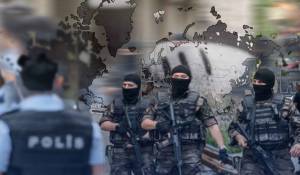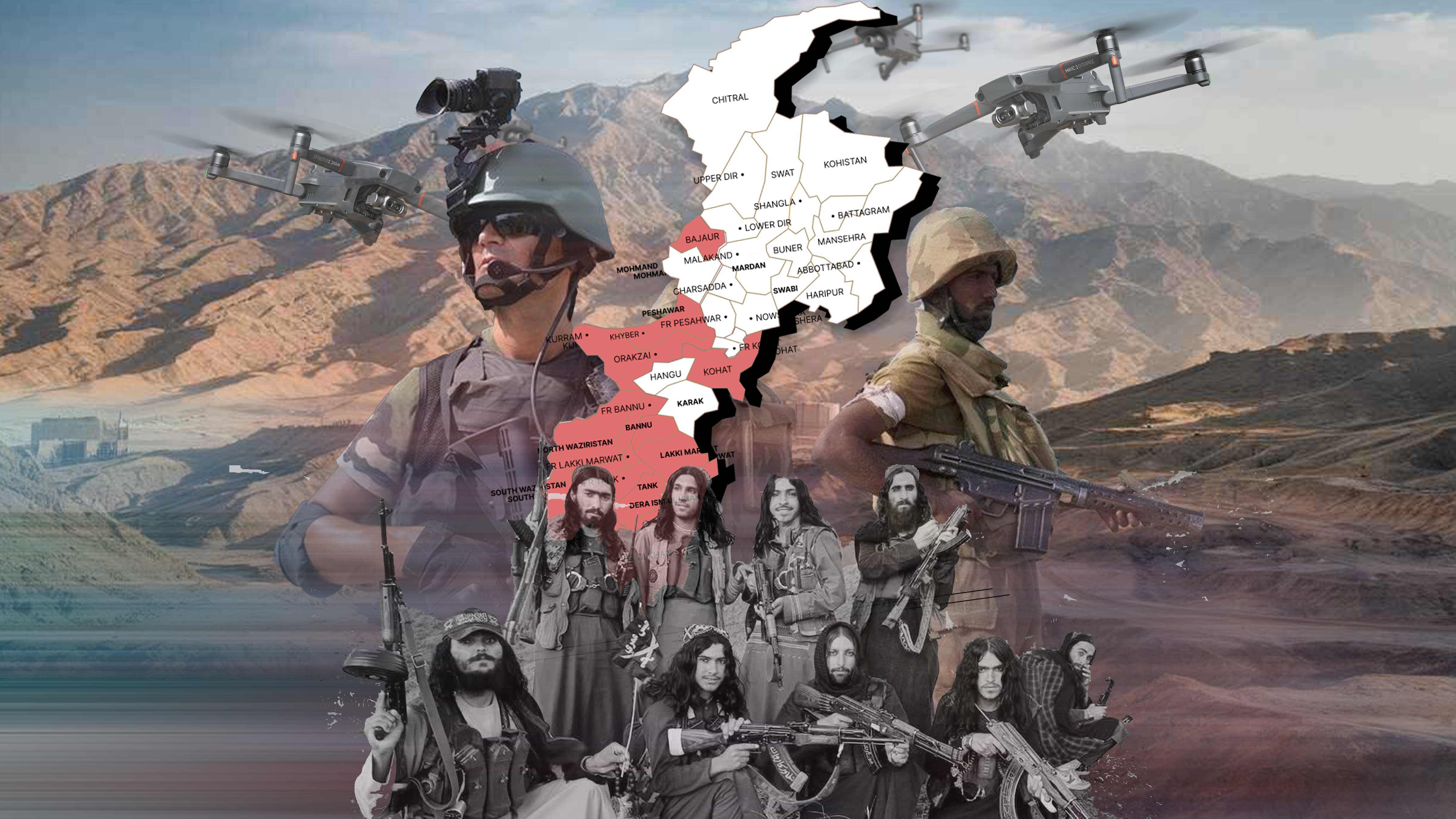
Ihsanullah Tipu Mehsud

December 30, 2025

Recent months have seen a significant surge in the presence of various Pakistani Taliban factions in the Waziristan region, which comprises three districts: North Waziristan, Upper Waziristan and Lower Waziristan in particular and the rest of the districts of southern Khyber Pakhtunkhwa in general. The number of militants pouring into the region even exceeds our earlier estimates of the Pakistani Taliban's overall strength. This increased presence has led to frequent clashes between the Pakistani Taliban and security forces, often putting local civilians in the crossfire.
The conflict has been further intensified by the increasing use of drones by both sides, the Pakistani Taliban and Pakistani security forces, which has also led to civilian casualties, including children, in the last weeks of July.
The surge has once again renewed the fear among locals of yet another Pakistani government military offensive in the region. Locals in Waziristan have suffered immensely due to Talibanization and the consequent Pakistani government operations, which have forced thousands to leave their towns and villages, resulting in the destruction of residential and commercial properties, as well as the ruin of businesses.
The deteriorating security situation in Waziristan may prompt the Pakistani government to consider launching a major military offensive against the Pakistani Taliban, marking a shift from its current counter-terrorism approach. Pakistan’s existing counter terrorism strategy is mainly characterized by targeted, intelligence-driven operations that are limited in scope and duration, and may be replaced by more comprehensive and sustained military action in response to the growing presence and influence of militant groups in the region.
The last of such kind of grand military operations, Operation Zarb-e-Azb in 2014, was tactically successful in military terms, as it achieved its objective of clearing the region of militants’ presence, but it proved extremely disastrous at the humanitarian level.
However, locals, whenever inquired, would lament that despite the Pakistani government's launching at least five military operations in the region in the name of clearing the area of Taliban, the same Taliban would resurface after some time. As a result, locals are increasingly perceiving these operations as more against them than the Taliban. This assertion is evident from the behavior of the Pakistani military establishment, which has always dealt with the militancy issue in the region as a part-time job, consistently neglecting the post-operation period of bringing rehabilitation and reconstruction, key components of every post-military operation phase. This pattern has repeated itself not once, but almost always.
Any large-scale military operation in Waziristan would likely trigger, yet again, a significant displacement of thousands of local residents, seeking to escape the ensuing violence, mirroring the mass evacuations of over one million people witnessed during past operations such as Zarb-e-Azb (2014) in North Waziristan and Rah-e-Nijat (2009) in South Waziristan. Given Pakistan's already strained economic situation and the absence of international humanitarian organizations, this displacement would likely exacerbate the humanitarian crisis, with potentially severe and far-reaching consequences for the affected communities.
Moreover, a significant challenge for Pakistani security forces in launching another large-scale offensive is the widespread presence of the Pakistani Taliban across all three districts of Waziristan. This is in stark contrast to previous operations, such as Operation Rah-e-Nijat and Operation Zarb-e-Azb. During Operation Rah-e-Nijat, the Taliban in the Wana region (now part of Lower Waziristan) had a peace deal with the state, and the Hafiz Gul Bahadur faction of the Pakistani Taliban in North Waziristan also had a peace agreement, effectively isolating the TTP, the main target of the operation.
Similarly, during Operation Zarb-e-Azb in North Waziristan, South Waziristan (now bifurcated into Upper Waziristan and Lower Waziristan districts) was cleared of Taliban, minimizing the risk of Taliban reinforcements to each other.
Currently, with no peace deals in place and the Taliban's presence spanning all three districts, launching an operation in one area would expose security forces to a multi-front conflict, with the potential for Taliban fighters to converge from multiple directions.
Months before Operation Zarb-e-Azb, the Tehreek-e-Taliban Pakistan (TTP) faction of the Pakistani Taliban had already been significantly weakened by the consecutive killings of its top leadership, including chief Hakimullah Mehsud and deputy chief Maulana Wali ur Rehman in US drone strikes in November 2013 and May 2013, respectively.
These high-profile eliminations sparked intense internal power struggles, resulting in the deaths of dozens of mid-level commanders and fighters in Waziristan. By the time Operation Zarb-e-Azb was launched, the TTP was severely fractured, plagued by internal differences at both factional and leadership levels.
Mullah Fazlullah, who succeeded Hakimullah as TTP emir in 2013, was a disputed figure among the ranks, which further exacerbated the situation, while the Waziristan faction, led by Khan Said Sajna, operated largely independently. At that time, the current TTP chief, Mufti Noor Wali Mehsud, aligned himself with Sajna rather than Fazlullah.
As a result, these internal divisions and infighting made the TTP vulnerable to Pakistani security forces, which swiftly ousted them from their last stronghold in North Waziristan during Zarb-e-Azb.
However, the current TTP has since rebuilt itself, establishing a stronger, more disciplined presence with safe havens across the border in Afghanistan. With diversified revenue streams, makeshift hideouts, ongoing recruitment drives, and enhanced propaganda capabilities, the TTP now poses a significant threat to the Pakistani government if it launches another large-scale operation.
Furthermore, another key challenge would be the non-cooperation of locals for any new operation or Pakistani government counter terrorism efforts, as their trust in state institutions has substantially dwindled over the years due to the non-compliance of commitments made by the latter.
Critically, there's a strong prevailing perception among common Pakistanis, reinforced by the attitude of successive federal governments, that Pakistan's top decision-makers believe stability in Punjab and Karachi is paramount and the problems of the rest of the country can be addressed later. Ironically, this same mindset is now reflected in the Khyber Pakhtunkhwa provincial government, where provincial decision-makers at the expense of the southern region, which is facing severe challenges and is currently in a state of utter chaos.
In recent weeks, apart from the TTP, a new jihadist alliance, formed in April, Ittehdul Mujahideen Pakistan (IMP), consisting of three factions—the Hafiz Gul Bahadur faction, Lashkar-e-Islam and Inqilab-e-Islami Pakistan—has emerged as a significant and growing threat. The alliance has been carrying out a substantial number of attacks since its emergence against the Pakistani police and armed forces.
The group is currently primarily focused on southern Khyber Pakhtunkhwa, with plans to expand to other parts of the province and potentially Punjab in the near future. The alliance has launched intensified and consistent attacks, including several drone strikes targeting Pakistani security forces personnel and their installations. The alliance's propaganda efforts are highly intense, utilizing multiple social media platforms and encrypted communication networks.
It is noteworthy that its propaganda is extensively disseminated through various channels affiliated with Al-Qaeda in the Indian Subcontinent (AQIS). Experts covering jihadist militancy in the region can readily observe the striking similarities between IMP's propaganda approach and that of AQIS.
If this alliance continues to operate, it has the potential, evident from its recent sophisticated attacks, its expansion, the substantial fighter numbers and the way it is deploying advanced tactics and weapons in attacks, to reach the level of TTP, the largest alliance of Pakistani Taliban, in the future.
Earlier, TTP and its key ally, Al-Qaeda, would recruit personnel from Pakistani security forces to gain access to key state installations and carry out attacks against them, resulting in numerous high-profile attacks across Pakistan against sensitive security installations. Currently, however, a different and alarming trend has emerged, with the TTP urging low-ranking personnel in Pakistani security forces, particularly its elite paramilitary force, the Frontier Corps (FC) and police, to abandon their jobs or face attacks. This tactic was previously used extensively by the Afghan Taliban during their insurgency in Afghanistan.
The TTP and other factions of Pakistani Taliban have been consistently targeting personnel from FC and police, particularly when they are on vacation with their families; both forces are currently at the forefront of counter-terrorism efforts in Khyber Pakhtunkhwa. Given that a significant number of Frontier Corps personnel are from areas in Khyber Pakhtunkhwa where the TTP has currently a strong presence, targeting them during vacations is relatively easy. The TTP's current propaganda and operational efforts are immensely focused on demoralizing security forces.
During a recent conversation, a prominent tribal elder and former member of the Pakistani parliament, hailing from a tribal district which is increasingly witnessing intense violence these days, perpetrated by various militant groups, expressed deep despair over the relentless killings of his people. With a sense of desperation, he lamented that both the federal and Khyber Pakhtunkhwa provincial governments have ignored their repeated pleas for peace. Desperate for a solution, he suggested constituting a grand tribal jirga comprising tribal elders, religious scholars, and youth to visit Kabul and Qandahar, engage directly with the Taliban leadership, and appeal to them to end the violence perpetrated by their affiliates in the Pakistani tribal areas.
The Pakistani state should be wary of the moment when locals start looking at the Pakistani Taliban as an alternative to the Pakistani state authorities. A similar scenario unfolded in Afghanistan, where the Taliban-led insurgency was initially limited in scope but expanded over time as a result of the continuous poor governance of both the Hamid Karzai and Ashraf Ghani administrations, leading many ordinary Afghans, even if not a majority, to view the Afghan Taliban as a more effective alternative to the Afghan government.
Ironically, recent years have highlighted a striking disparity in the effectiveness of the Taliban and Pakistan's governments in addressing their respective security threats. While the Taliban has made significant strides in containing the Islamic State Khorasan Province (ISKP) and National Resistance Front (NRF), two distinct security challenges, Pakistan continues to grapple with the Pakistani Taliban, driven by jihadist ideology and the Baloch armed separatists, fueled by secular nationalism.
What is remarkable is that the Taliban have achieved this success despite meagre resources, a relatively small security force and an underdeveloped intelligence mechanism. In its first three years in power, the Taliban has proven surprisingly effective in containing militancy within its borders.
In stark contrast, Pakistan, with its vast security infrastructure, globally recognized intelligence capabilities and extensive counter-terrorism experience over the decades, continues to struggle with containing militancy within its borders.
A comparison of the security capabilities of both countries can be gauged through one striking example: Pakistan's paramilitary Frontier Corps (FC) has approximately 170,000 personnel, a number greater than the Taliban's entire defense forces, which are estimated to be around 150,000.
Pakistan's ongoing struggles with militancy raise critical questions about its security strategy, including whether its approaches are sufficiently adapted to address the complex and evolving nature of the threats it faces. As the security landscape continues to shift, Pakistan's inability to effectively contain militancy despite its resources and experience requires closer examination and consequent revision.
For security forces, lost confidence of locals can be restored through effective battlefield performances, as demonstrated during the recent four-day Pakistan-India aerial confrontation. Pakistani Air Force's exceptional outperformance of India sparked widespread nationwide celebrations and significantly bolstered public support for the military.
Similarly, on the counter-terrorism front, effective operations against militant groups in areas with high concentrations could help restore local trust in Pakistani state institutions, particularly security forces. This renewed trust could, in turn, embolden increased cooperation and support from local populations, ultimately strengthening the security forces' efforts.
Finally, Pakistan's internal security challenges pose the most significant security threat compared to external threats. Internal security challenges have already taken a massive toll on the country in terms of human lives, financial losses, and social unrest over the years, and the situation will continue to worsen and further exacerbate if these security challenges are not contained.